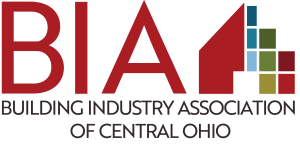Tap and Impact Fees
A Growing Burden
The recent Supreme Court decision in Sheetz v. County of El Dorado (NACo article) has brought national attention to the issue, highlighting the need for local governments to provide more rigorous justifications for these fees. The ruling protects property owners from excessive and unrelated charges, setting a precedent that could influence the landscape of housing development across the country.
As central Ohio continues to grow, understanding the impact of these fees is crucial for both developers and prospective homeowners.
What are tap and impact fees?
Let’s start by clarifying what tap and impact fees are for consumers. Both are one-time charges related to water and wastewater services, but they serve distinct purposes.
- Tap fees cover the cost of connecting a property to the existing water or sewer main. This includes the physical connection, installation of a meter, and any necessary excavation. Tap fees are typically based on the size of the connection (residential or commercial).
- Impact fees are charged to offset the cost of expanding public infrastructure to accommodate new housing development. This includes facilities like water and wastewater systems, roads, schools, and parks. Impact fees are generally calculated based on the size of a new home or building

The escalating costs of tap and impact fees are emerging as a significant challenge for both homebuyers and housing developers across the nation. As communities struggle with rapid population growth and aging infrastructure, these fees have become a necessary tool to fund critical public improvements. However, their rapid increase is placing a considerable strain on housing affordability.
Central Ohio offers a prime example of this trend. Counties like Delaware have seen exponential growth, leading to soaring tap and impact fees. But it’s essential to recognize that these fees are not merely a local issue. Many regions across the country are facing similar pressures. As development expands and infrastructure needs increase, we can anticipate particularly for first-time homebuyers.
To address this challenge, a multifaceted approach is necessary.
- Local governments must carefully evaluate the need for these fees, exploring alternative funding sources and implementing strategies to mitigate their impact on affordability.
- Developers can play a role by incorporating fee estimates into project budgets and exploring innovative design solutions to minimize infrastructure demands.
Ultimately, finding a balance between funding essential public services and maintaining housing affordability is crucial for the long-term success of communities.
Mitigating the Impact of Tap and Impact Fees
The Economic Implications
Tap and impact fees, while necessary for infrastructure development, can significantly impact housing affordability. When these fees rise rapidly, they can:
- Increase housing costs: Developers often pass these costs onto homebuyers, making homes less affordable.
- Discourage development: High fees can deter developers from building new homes, contributing to housing shortages.
- Exacerbate inequality: Lower-income buyers are disproportionately affected by increased housing costs.
- Impact local economies: A less affordable housing market can hinder economic growth and job creation.
Strategies for Mitigation
To address these challenges, both governments and developers can implement strategies to mitigate the impact of tap and impact fees:
Government Initiatives:
- Fee structure reform: Implementing tiered fee structures based on property value or development type can help distribute the burden more equitably.
- Infrastructure financing alternatives: Exploring alternative funding sources, such as public-private partnerships or impact bonds, can reduce reliance on fees.
- Growth management planning: Effective land-use planning can help manage growth and reduce the need for costly infrastructure expansions.
- Affordable housing incentives: Providing incentives for developers to build affordable housing can help offset the impact of increased fees.
Developer Strategies:
- Value engineering: Optimizing building designs and construction methods can reduce infrastructure demands and associated fees.
Fee negotiation: Developers can negotiate with municipalities to find ways to offset or reduce fee burdens.
Community partnerships: Collaborating with local governments and community organizations can help identify shared solutions and reduce costs.
Diversification: Exploring different housing types, such as multi-family or mixed-use developments, can help mitigate the impact of fees.
Additional Considerations
- Regional cooperation: Collaboration between neighboring municipalities can help share infrastructure costs and reduce the burden on individual communities.
- Long-term planning: Proactive planning for infrastructure needs can help avoid costly emergency projects and associated fees.
- Public awareness: Educating the public about the factors influencing housing costs, including tap and impact fees, can foster understanding and support for potential solutions.
It’s imperative that we continue the conversation about tap and impact fees. By sharing insights, exploring innovative approaches, and advocating for policy changes, we can collectively mitigate the impact of these fees and build more sustainable and equitable communities. We invite you to join the conversation about tap and impact fees at our Builders and Developers Council on September 11th (BIA training room). Together, we can build a stronger, more equitable community.
